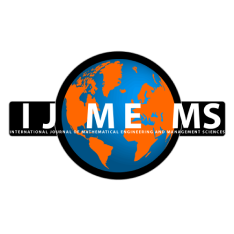Vikash Ghlawat
Department of Mathematics, School of Basic Sciences and Research, Sharda University, Greater Noida, Uttar Pradesh, India.
Richa Sharma
Department of Mathematics, Jaypee Institute of Information Technology, Sector 62, Noida, Uttar Pradesh, India.
Khursheed Alam
Department of Mathematics, School of Basic Sciences and Research, Sharda University, Greater Noida, Uttar Pradesh, India.
DOI https://doi.org/10.33889/IJMEMS.2024.9.5.062
Abstract
If a crystal undergoes mechanical stress, then an electrical potential is developed across its sides; this phenomenon is called piezoelectricity, or the piezoelectric effect. Piezoelectric materials include quartz, zinc oxide (ZnO), lead zirconate titanate (PZT4), and Rochelle salt. There are numerous uses for piezoelectricity in signal and electrical transducers. In this work, transitional and creep stresses are evaluated in a thin disc made up of piezoelectric transversely isotropic solids subjected to rotation. The mathematical expressions of stress components are computed for the rotating disc by using Seth’s transition theory considering the rotation effect in circular disc. The electric displacement relations and various stress components are computed using Hooke’s Law. A non-homogeneous differential equation is obtained by using mathematical relations and the equilibrium equation. The theoretical solution of the differential equation is obtained under specified boundary conditions. Creep stresses are studied for the considered material. The obtained results are shown graphically, analyzed numerically, and concluded with a discussion of the results for transversely isotropic piezoelectric materials such as BaTiO3 and PZT-4, among others. On the basis of all the numerical discussions and graphs, it is concluded that discs composed of transversely isotropic piezoelectric (PZT4 and BaTiO3) materials are more stable than discs composed of transversely isotropic (magnesium and beryl).
Keywords- Transversely isotropic, Piezoelectric, Rotating disc, Transition theory.
Citation
Ghlawat, V., Sharma, R., & Alam, K. (2024). Creep Stress Analysis of Transversely Isotropic Rotating Disc Composed of Piezoelectric Material. International Journal of Mathematical, Engineering and Management Sciences, 9(5), 1185-1197. https://doi.org/10.33889/IJMEMS.2024.9.5.062.



